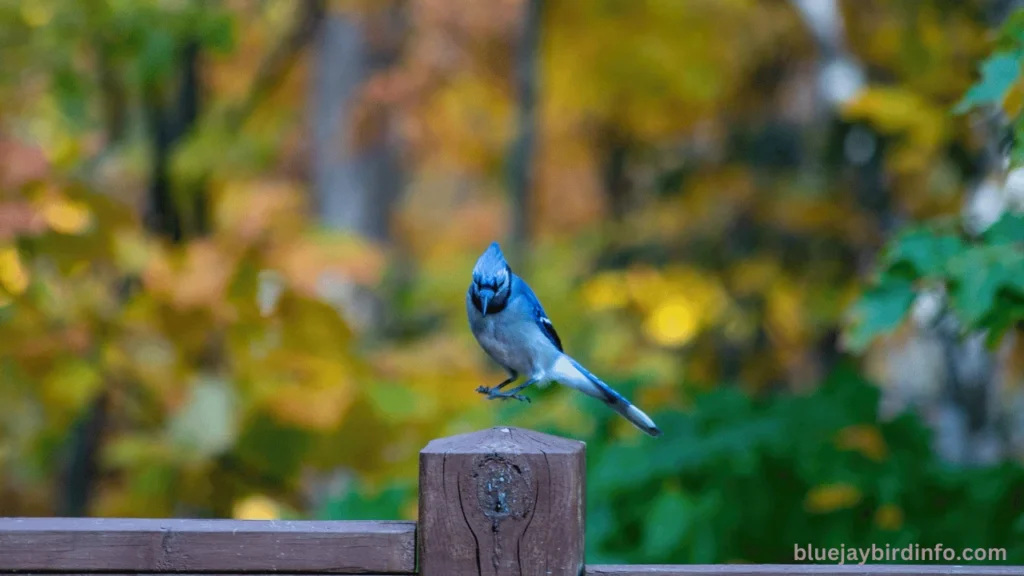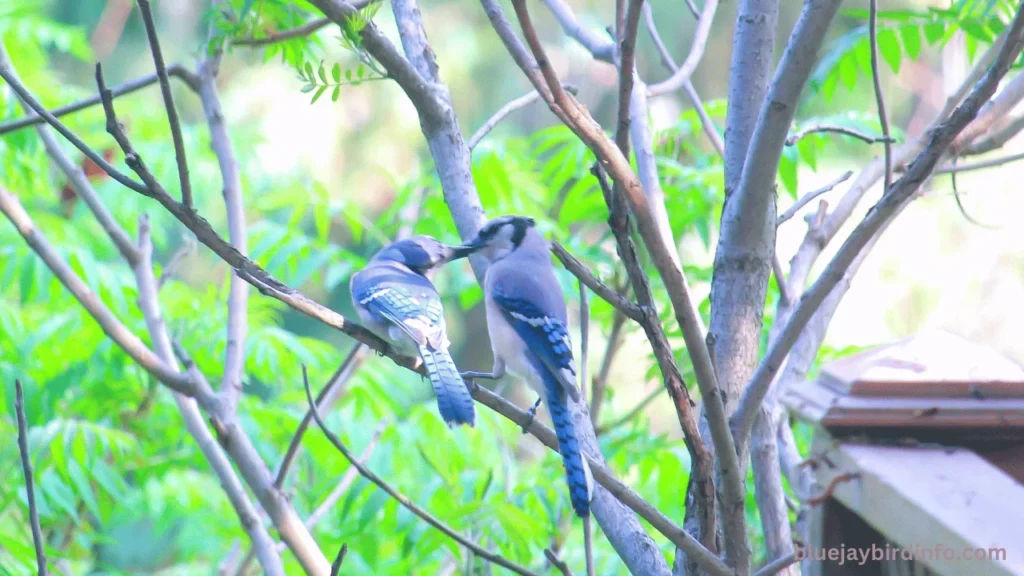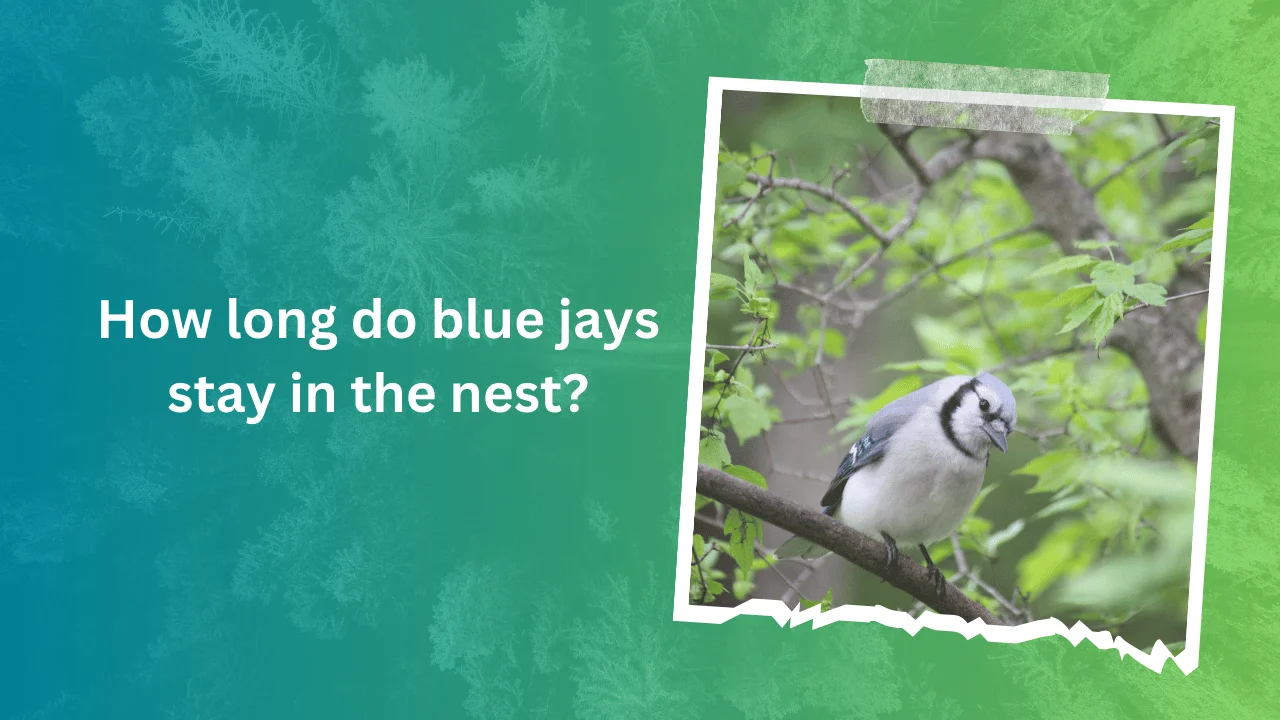Have you ever spotted a vibrant blue jay perched proudly on a branch, keeping a watchful eye on a messy bundle of twigs high in a tree?
That, my friend, is a glimpse into the fascinating world of blue jay parenthood. But the question remains: how long do these feathered friends stay nestled in their cozy home before venturing out into the world? The answer might surprise you.
Unlike human babies who take years to become independent, baby blue jays have a much shorter stay-at-home period. But it’s not just a matter of them packing their proverbial lunch and leaving for college.
Their time in the nest is a crucial period of growth and development, where they learn the essential skills needed to survive on their own.
So, how long exactly does this critical learning and development phase last? Buckle up, because we’re about to delve into the secrets of the blue jay nursery and uncover the fascinating timeline of a blue jay chick’s journey from helpless hatchling to independent bird!
Contents
Blue Jay Nesting and Egg Laying
Blue jays are known for their meticulous nest-building skills. They typically construct their nests in trees, often choosing sturdy branches that can support the weight of the nest and its occupants. The nests are usually built in a cup-shaped structure using twigs, leaves, grasses, and other natural materials.
Blue jays typically lay their eggs in late April or early May. The clutch size can vary, but it is usually between 3 and 5 eggs. The eggs are a pale blue color, often speckled with brown or gray spots.
Both the male and female blue jays play important roles in nest construction and egg incubation. The female is responsible for laying the eggs and incubating them, while the male helps to gather nesting materials and provide food for his mate during the incubation period.
The Incubation Period
Successful incubation is crucial for the development of blue jay eggs. The optimal temperature for incubation is around 98-100 degrees Fahrenheit (37-38 degrees Celsius).

The parent birds carefully regulate the temperature by sitting on the eggs and adjusting their body position.
Humidity is another important factor for egg development. The nest environment must maintain a certain level of humidity to prevent the eggs from drying out. Parent birds may help to regulate humidity by adding or removing nesting materials or by adjusting their own body position.
Egg turning is essential for ensuring that all parts of the egg are exposed to the warmth of the parent’s body. By turning the eggs regularly, the parent birds help to prevent the embryo from sticking to the shell and ensure that it develops evenly.
Factors Affecting Incubation Time
Several factors can influence the incubation time of blue jay eggs. Environmental conditions, such as temperature and humidity, play a crucial role. If the nest is too cold or too hot, or if the humidity is too low or too high, it can affect the development of the embryos.
The quality of parental care can also impact incubation time. Frequent egg turning is essential for ensuring proper development, and the parent birds must maintain a consistent temperature and humidity level in the nest.
If the parent birds are distracted or unable to provide adequate care, the incubation period may be prolonged or unsuccessful.
The size and quality of the eggs can also influence incubation time. Larger eggs may take longer to hatch, while eggs that are damaged or deformed may have difficulty developing properly.
The Hatching Process
Blue jay eggs typically hatch after 17-19 days of incubation. The exact hatching time can vary depending on factors such as environmental conditions and the quality of parental care.
The hatching process begins with the chick pecking at the inside of the egg. This weakens the shell, allowing the chick to eventually break free. The chick emerges from the egg covered in a sticky substance called meconium, which is later removed by the parent birds.
Parental care is essential for the survival of newborn chicks. The parent birds provide warmth, protection, and a constant supply of food. They carefully tend to their young, removing any broken eggshells or fecal matter from the nest. The parent birds will continue to feed and care for the chicks until they are ready to fledge.
Nestling Period
After hatching, blue jay chicks remain in the nest for several weeks, during which they are completely reliant on their parents for food and care.
Parent birds bring a variety of insects, seeds, and fruit to the nest to feed their young. They also provide warmth and protection, shielding the chicks from the elements and predators.
Blue jay nestlings grow and develop rapidly during this period. Their feathers begin to emerge and their eyes gradually open. As they grow older, they become more active and may even venture out of the nest for short periods of time.
Fledging, the process of leaving the nest and beginning to fly, typically occurs when the chicks are around 2-3 weeks old.
They will initially make short flights between nearby branches, gradually increasing their distance and confidence. The parent birds continue to provide food and guidance to their fledglings until they are able to fend for themselves.

Conclusion
In conclusion, the nesting period of blue jays is a critical stage in their life cycle. From the construction of the nest to the fledging of the young, the parent birds play a vital role in ensuring the survival of their offspring.
The incubation period typically lasts around 17-19 days, during which the parent birds must maintain optimal conditions for egg development.
After hatching, the nestling period lasts for several weeks, during which the parent birds provide food, warmth, and protection. The fledging process marks the transition from nestling to fledgling, as the young birds begin to explore their surroundings and learn to fly.
By understanding the nesting behavior and development of blue jays, we can gain a deeper appreciation for these fascinating birds and the challenges they face in raising their young.
Protecting their habitats and ensuring their survival is essential for maintaining biodiversity and the health of our ecosystems.
Also read other articles regarding Blue Jay Nesting!
FAQ’s
How long do blue jays stay in their nests?
Blue jay nestlings typically remain in the nest for 2-3 weeks before fledging.
What do blue jay parents feed their young?
Parent birds bring a variety of insects, seeds, and fruit to their nestlings.
How many eggs do blue jays lay?
Blue jays typically lay 3-5 eggs per clutch.
What is the role of the male blue jay in nesting?
The male blue jay helps to build the nest and gather nesting materials. He also helps to feed the female during the incubation period.
When do blue jays start building their nests?
Blue jays typically start building their nests in late spring or early summer.
How do blue jays protect their nests from predators?
Blue jays may use a variety of strategies to protect their nests, such as building them in secluded locations, camouflaging them, or being aggressive towards potential predators.








